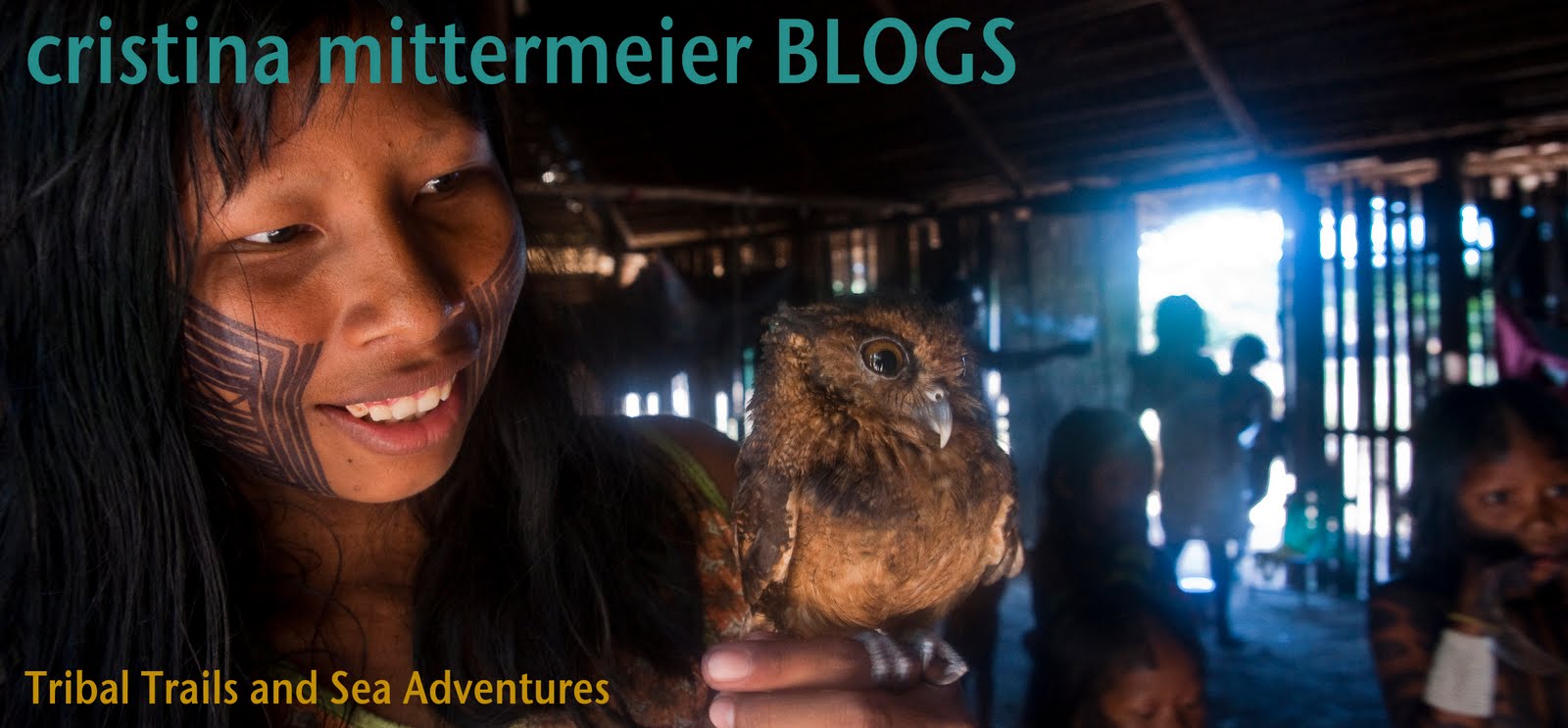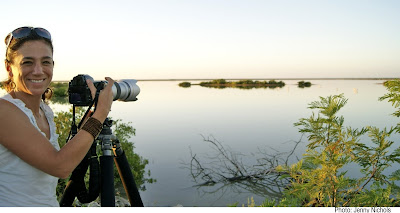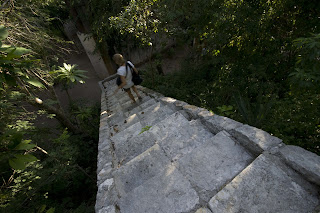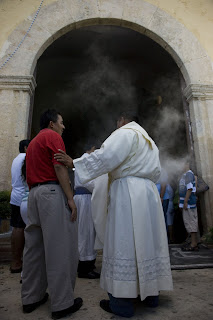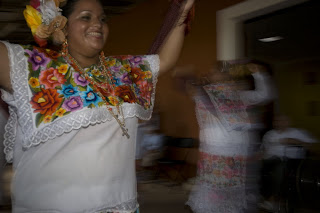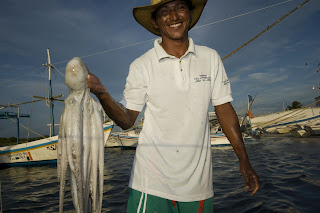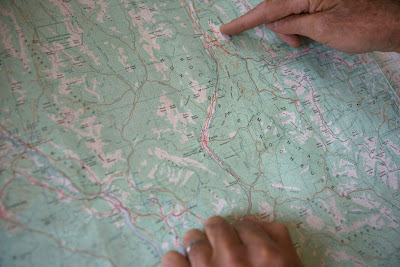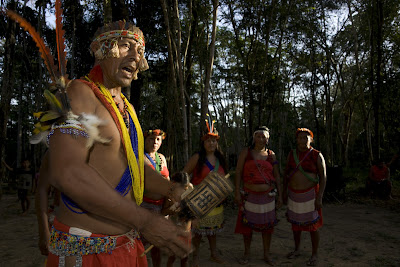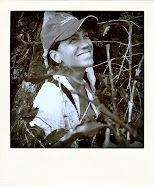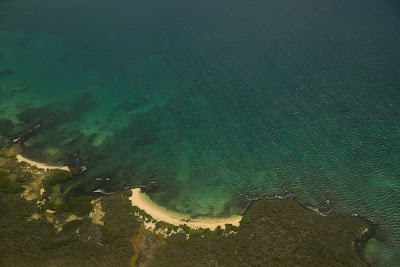
I see them smiling with their sunburned cheeks and bald spots – American and
European tourists with their fleshy thighs and large-brimmed hats delighted at the completion of the “adventure of a lifetime”. Most of them have come for a 4-5 day “expedition and have done a quick-and-dirty tour of some of the most accessible of the islands. The park service tries to coordinate the departures and docking of the almost 90 ships that provide tour services, but the park seems to already be bursting at the seams and everywhere I go, there are at least 50 other people on the beach. With the approval of over 70 news vessels for tourism, paradise will surely be lost.
Until recently coming to the Galapagos was truly the kind of journey left only for the wealthy and the adventurous, and financing a trip to the archipelago was simply out of reach for most people. Things have changed and the Enchanted Islands are fast becoming the New Cancun, a cheap destination for the tequila-drinking, sun worshiping crowds. Although these lovely islands with their enchanting fauna have remained fairly isolated and remote (and have been protected as a National Park since 1959), the relatively small human population that calls the archipelago home, has slowly swelled and expanded its footprint on some of the larger islands like Isabela, San Cristobal and Santa Cruz. The demands for resources like water, fuel and food, not to mention jobs, has increased relentlessly as the number of people living, working and traveling through the islands has exploded. The smaller, uninhabited or barely inhabited islands are still moderately isolated, but even there, the delicate fauna and flora has long been impacted by pirates, whalers, settlers, invasive species and now, hordes of tourists.

Several species have already gone extinct and many others, like the world-famous Lonesome George, the last surviving giant tortoise from the Island of Pinta, are quite close to disappearing forever from the face of the Earth (as explained by a patient guide at the Darwin Station who desperately tried to keep the attention of his yawning group). What has truly been lost here, however, is the isolation and remoteness of the
Galapagos, which is the magic ingredient that made this place the unique biological experiment that mesmerized Darwin and continues to fascinate naturalists today. That said, with several daily flights and countless ships arriving and leaving from its ports, the islands might as well be located next to Quito. It is no longer possible to find a lonely cove on the shores of the most visited islands; everywhere one goes the “sanctuary of nature” is now shared by as many as 5 or 6 boats, some of them carrying over 80 passengers; an experience more closely resembling an afternoon in Kuta beach or Acapulco. For those of us who have been lucky to travel here in the past, it is clear (and painful) to see how things are changing so fast. New pests are being introduced (even as old nemesis pests, like goats are obliterated at enormous expense from some of the islands) and an uninformed populace is slowly eroding the very habitat that the tourists who support their livelihood are here to see. As if introduced pests and disappearing terrestrial habitats were not enough, the Galapagos park service, the government of Ecuador and the many international and domestic conservation groups that work here have not been able to prevent or stop the massive obliteration of Galapagos marine species. From sea cucumber overexploitation to massive shark fining, the slow demise of the Galapagos is equivalent to allowing massive slaughter of lions and zebras in the Serengeti while all the responsible parties sit on their hands.

It is hard to tell if this is part of the natural infighting that occurs in small, contained societies, where conflict and gossip are the preferred way of conducting business and where maintaining ones power and social standing is more important than doing ones job, or if there has been a real lack of vision and leadership to set parameters and establish order in one of our planet’s most beloved “special places”. Either way, the loss of the experience has been lost. I wonder what would happen if instead of opening cheap tourism to the masses, the Park authority charged visitors the real cost of seeing something so unique, endangered and special. The $100 that every visitor pays to enter the park hardly reflects the cost of managing, maintaining, studying, understanding and protecting such a vast archipelago. Just recently a new species of land iguana (a pink creature the size of cat…..not a small, drab beetle!) was discovered. Think about it: new species are still being found in the place where we first learned about evolution and natural selection. Maybe maintaining nature’s experiments isolated should be more important than making a few bucks??
Here are a couple of ideas I would like to throw out:
1. From my point of view (and the idea

is shared by some of the movers-and-shakers in the Galapagos), the park entry fee should be closer to $500 US per foreign tourist. This is what tourists who want to spend 20 minutes in the presence of wild Mountain gorillas in Rwanda must pay to see these animals -- and there is a waiting line extending at least a year into the future, so there is no lack of people willing to pay to see something special! What about all the people who won’t be able to afford it? Well, I cannot afford to go many places so I must settle for what I can afford; that is just the nature of capitalism. We cannot please everyone all of the time and the priority should be on maintaining an irreplaceable ecosystem, not on making tourists happy.
2. The funds raised by the park on entry fees and other consumables should stay in the Galapagos. As far as I can tell, most of that money is sent back to mainland Ecuador where it pays for expenses that have little or nothing to do with the Galapagos.
3. The park should be zoned to accommodate different “minimum length visits”. Some of the islands should be reserved for people willing to spend at least 2 weeks in the archipelago. A tourist rushing through the Galapagos in 4-5 days cannot possible be interested in a real immersion in its complex natural history, therefore that person should not be granted access to some of the more isolated, special places.

4. An international group of experts should be assigned to oversee activities and development in the Galapagos. It is impossible to expect the local experts not to have all sorts of biased and self-serving opinions. This is not a criticism, just a recognition of the fact that we are all just human.
5. The park should absolutely NOT be taken off the Endangered World Heritage
Site list. The Galapagos was the first declared World Heritage Site and from what I was able to see in my brief visit, not all is well and the officials in charge have a lot of work ahead of them to make things right. The Galapagos is not “saved”; on the contrary, it is under enormous danger of forever changing and turning into just another cheap tourist trap (no different from Coney Island or Miami Beach). Now, if we cannot save the Galapagos, what hope is there for less interesting places on Earth?
That is just my opinion.
 Cristina is headed to San Francisco January 26, 2010 to speak on ecosystem services and the 17th tome in the CEMEX conservation book series, The Wealth of Nature: Ecosystem Services, Biodiversity and Human Well- Being.
Cristina is headed to San Francisco January 26, 2010 to speak on ecosystem services and the 17th tome in the CEMEX conservation book series, The Wealth of Nature: Ecosystem Services, Biodiversity and Human Well- Being.